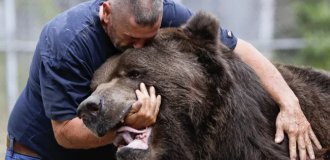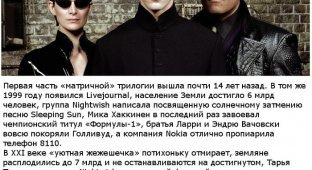Fashion of gangsters and their fighting friends: unsurpassed and impeccable style of those who walk on the razor's edge (7 photos)
During the arrest, one very interesting document was confiscated from Salvatore Lo Piccolo, nicknamed “Baron”, the godfather of the Sicilian mafia, the head of the Cosa Nostra organization - the “Ten Commandments of Cosa Nostra” - an unofficial set of laws that every member of the criminal organization must follow. The document was kept in a leather briefcase among other business papers of the arrested person.
The list, which the press dubbed the “Ten Commandments of the Mafia,” looks like this:
1. No one can come up and introduce themselves to one of “our” friends. He must be introduced by another friend of ours.
2. Never look at your friends' wives.
3. Do not allow yourself to be seen around police officers.
4. Avoid visiting bars and clubs.
5. It is your duty to always be at the disposal of Cosa Nostra, even if your wife is giving birth.
6. Always show up for your appointments on time.
7. Wives should be treated with respect.
8. If you are asked to give any information, answer truthfully.
9. You cannot embezzle money that belongs to other Cosa Nostra members or their relatives.
10. The following persons cannot enter Cosa Nostra: one whose close relative serves in the police; one whose relative is cheating on his spouse; one who behaves badly and does not observe moral principles.

The origin of the name Cosa Nostra is very simple - translated from Sicilian it means “Our Cause”. This criminal network, defined by some as the mafia, has been operating in Sicily since the beginning of the 19th century, becoming a serious international organization at the beginning of the 20th century.
However, the laws of the underworld implied not only a certain code of honor and behavior, but also required compliance with a special dress code.

Gangster clothing style is traditionally associated with mafia clans operating in the United States in the 20s, 30s and 40s of the XX century. The very term “gangster” has essentially become an anachronism today. This word has a very clear connotation associated with a certain period in history, and, of course, carries not only a special meaning, but also a special style. Without a doubt, representatives of the criminal elite of those years can be safely called trendsetters of the highest fashion. After all, paradoxically, the mafia was a real beau monde.
Since 1920, many magnificent criminals have appeared in expensive suits and with sonorous names. Among the most famous representatives of this dangerous profession were: "Scarface" - Al Capone, Charles "Lucky" Luciano, George "Bugs" Moran, Jack "Legs" Diamond and Arthur "Dutch Schultz" Flegenheimer. In the thirties they added Charles "Pretty Boy" Floyd and Lester "Little Nelson" Gillies. And finally, by 1940, Benjamin “Bugsy” Siegel joined the brilliant company.

A tailored suit is key for a gangster. In his book Inventing the Public Enemy: The Gangster in American Culture 1918 - 1934, author David E. Ruth discusses the fashion of the Prohibition-era Mafia clans: "Gangsters become avid consumers who invest a lot of time and exorbitant expenses." to always stay on the cutting edge of fashion. A tastefully furnished apartment, a new luxury car, diamond rings, the ever-present diamonds on a tie clip, an elegant belt buckle... Fifty suits, twenty-five pairs of shoes...” With such an extravagant lifestyle, none of this is surprising!

When choosing suit material, gangsters preferred smooth fabrics - no tweed or thick English wool! No “casual” or “tired” elegance, in the spirit of Prince Edward VIII of Wales, who was a trendsetter in men’s fashion on the other side of the ocean. As for color, they were mainly shades of blue, brown or gray. Smooth black fabric with small vertical stripes with a noble silk sheen was no less popular.

The suit was a classic two-piece or three-piece with a double-breasted jacket. Needless to say, the fit had to be impeccable, the shirts had to be perfectly ironed, and the shoes had to be polished to a shine.

Shirts could be plain (often quite brightly colored) or thinly striped, often with a white collar and cuffs. The ties were mostly dark, but always interspersed with shiny fiber. On special occasions, a tie could be replaced with a laconic bow tie - as a symbol of exceptional chic. As for hats, any gangster worth his salt must have a hat in his wardrobe. Number one is the fedora hat, also known as “Borsalino” (named after the Italian company that has been producing high-class hats since the mid-19th century). The classic Borsalino shape (a headdress made of soft felt, wrapped once with a ribbon, with a soft brim and three dents on the crown) is inextricably linked with the image of Al Capone. Today Borsalino is not only a thriving cult brand, but also a common noun that has entered the explanatory dictionaries. Most of the brand's boutiques are concentrated in Italy.



























